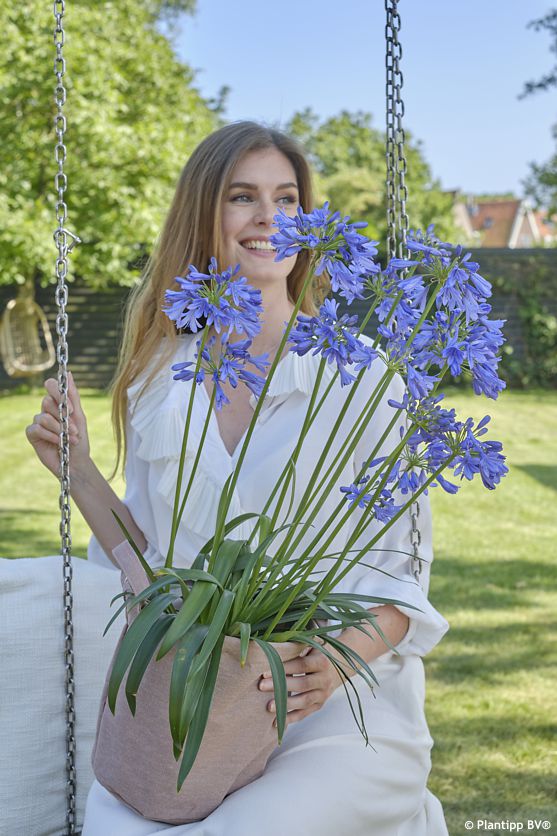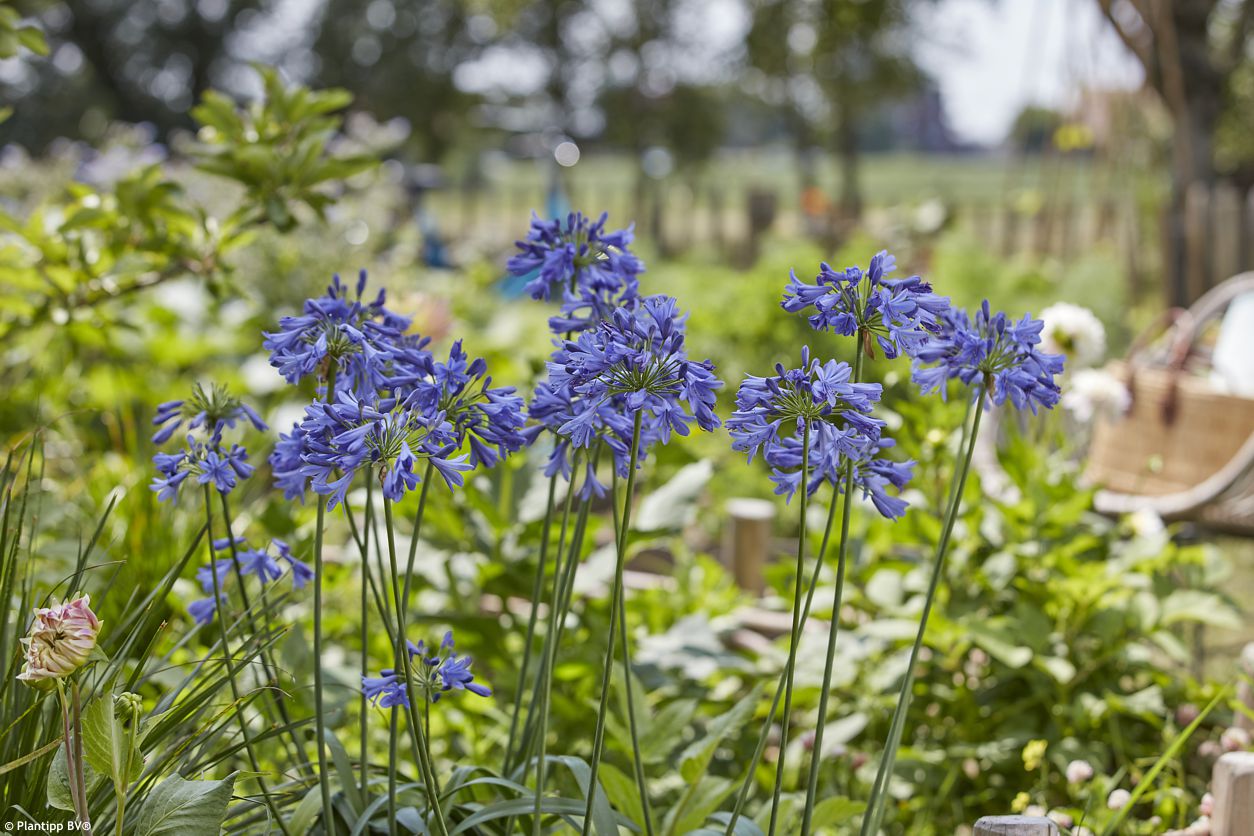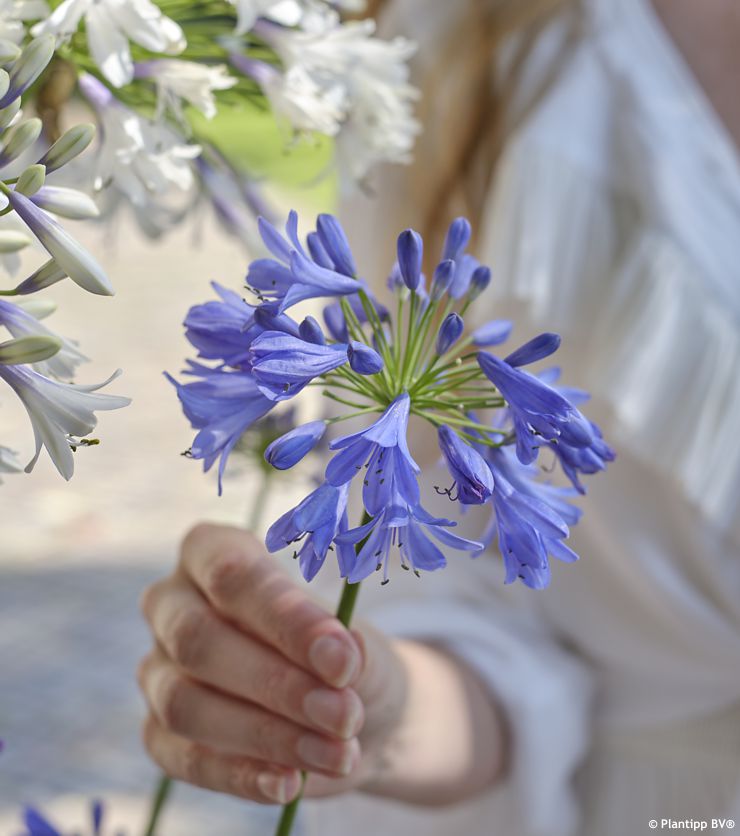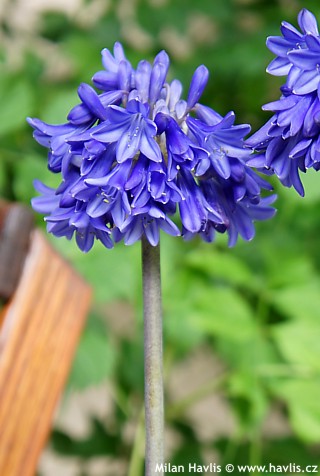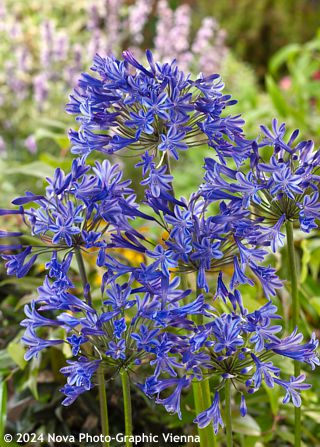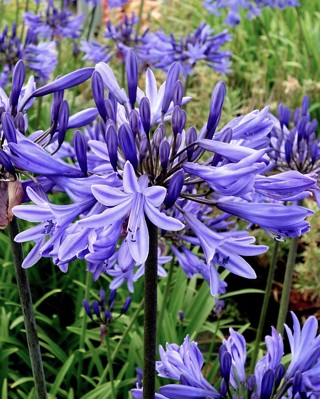Agapanthus 'ANDbin' EVERPANTHUS® EVER SAPPHIRE African blue lily
Agapanthus
The genus Agapanthus, commonly known as African blue lily, comprises eight recognized species of perennial herbs native to southern Africa, particularly the regions of the Cape, Lesotho and KwaZulu-Natal. The first plants were brought to Europe as early as 1679 from the Cape Town area to botanical gardens in the Netherlands – a logical development given the Dutch colonial dominance in what is now South Africa. The genus was first described botanically by Jan Commelin in 1707, but it was French botanist Charles Louis L’Héritier de Brutelle who formally classified it in 1788, establishing Agapanthus as a distinct genus within the Amaryllidaceae family. These plants are characterised by clump-forming growth, strap-like leaves and striking inflorescences composed of tubular flowers, most commonly in shades of blue and white. In the wild, they grow on sunny slopes, grassy plains and rocky outcrops, exposed to significant temperature fluctuations. Although early botanists and plant collectors, driven by a desire for exotic prestige, brought specimens from the southern hemisphere to impress European courts and university gardens much earlier, the genus only began appearing in European botanical collections from the 19th century onwards, as its hardiness was gradually assessed.
The most cold-hardy species proved to be Agapanthus campanulatus, native to higher elevations in South Africa’s interior. Its ability to withstand cold winters inspired British botanist Lewis Palmer, then vice-president of the Royal Horticultural Society (RHS), based at Headbourne Worthy Grange in Hampshire, to develop the famous Headbourne hybrid line. In the mid-20th century, Palmer began crossing A. campanulatus with other deciduous species such as A. inapertus, aiming to produce perennials that could survive outdoors in the British climate without greenhouse protection. These hybrids laid the foundation for modern breeding, which continues today in the USA, Europe and New Zealand. Ironically, many contemporary breeders are unaware that, under the right conditions, these hybrids can thrive even in Central Europe, enduring frosts down to -20 °C and sometimes even lower.
Agapanthus EVER SAPPHIRE is like a blue flame rising from a tuft of fresh green leaves, bursting into full splendour in the height of summer. Its flowers display a deep, velvety blue with a hint of violet, reminiscent of the evening sky just after sunset. They are arranged in tight umbels atop slender yet sturdy stems that emerge from a compact clump of foliage. The leaves are medium green, strap-shaped, with a subtle sheen that keeps the plant looking fresh even outside its flowering period. The overall habit is low and firm – the plant forms dense clumps about 50–60 cm tall, appearing both tidy and natural. It blooms in July and August. This cultivar belongs to the EVERPANTHUS® series and was developed in 2007 in Hartebeespoort, in South Africa’s North West Province, by botanist Quinton Bean, who crossed a hybrid form of Agapanthus caulescens with a hybrid of Agapanthus campanulatus. It is protected under patents PP26336 (USA – 2015) and EU 55541 (Europe – 2016).
Agapanthus in the garden exudes quiet confidence – and rightly so, as its blue flowers are a rare sight in temperate climates, so make the most of them. EVER SAPPHIRE pairs beautifully with plants of finer texture, such as compact catmints or cushion-forming thymes, evoking the feel of a Mediterranean garden. For a more prairie-like rhythm, combine it with festuca, stipa, and gaura. And for maximum aesthetic impact with a modern edge, try an ambitious composition with silver-leaved perennials and subshrubs like helichrysum, artemisia, santolina, or senecio.
Grow agapanthus in fertile soil with excellent drainage to prevent root rot over winter. From late spring to the end of summer, the plant benefits from regular feeding and occasional watering, although its fleshy roots allow it to tolerate short dry spells. In Mediterranean climates, it is a beloved summer feature in both containers and garden beds. In temperate regions, it excels in summer compositions near pools and terraces, where the season lingers longest. Good news: it is not favoured by slugs. For winter protection in zone 7, a layer of dry bark or leaves at the end of autumn is sufficient, but in colder areas with harsh winters, a thicker mulch and waterproof cover are recommended. At the end of winter, as soon as the risk of severe frost has passed, remove the cover and half the mulch, then wait for true spring (March/April) to uncover the rest, clear away old foliage and allow the plant to re-emerge. Tested hardiness is -17 °C (USDA zone 7) and it is believed to tolerate even lower temperatures.
Last update 26-10-2025
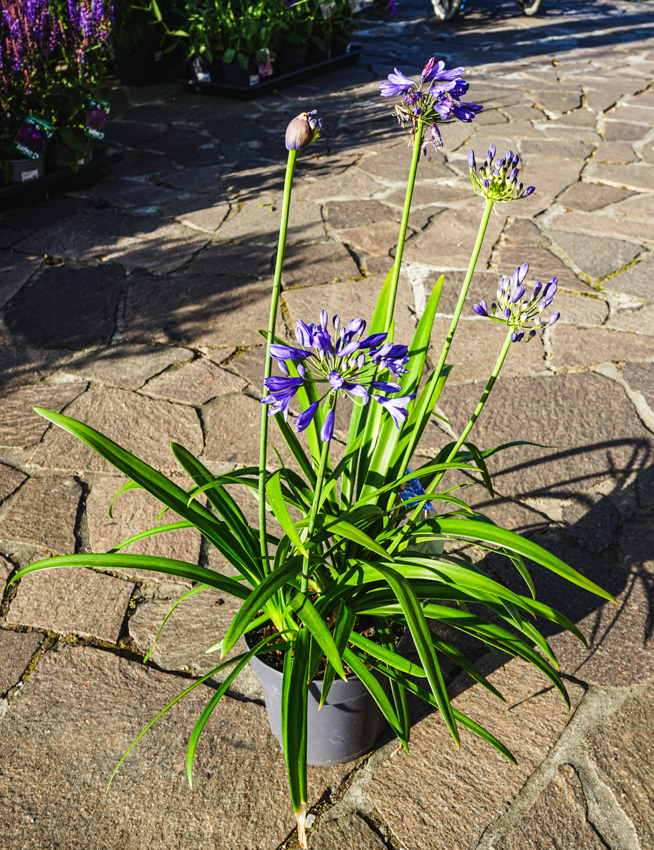
505,75 Kč

505,75 Kč
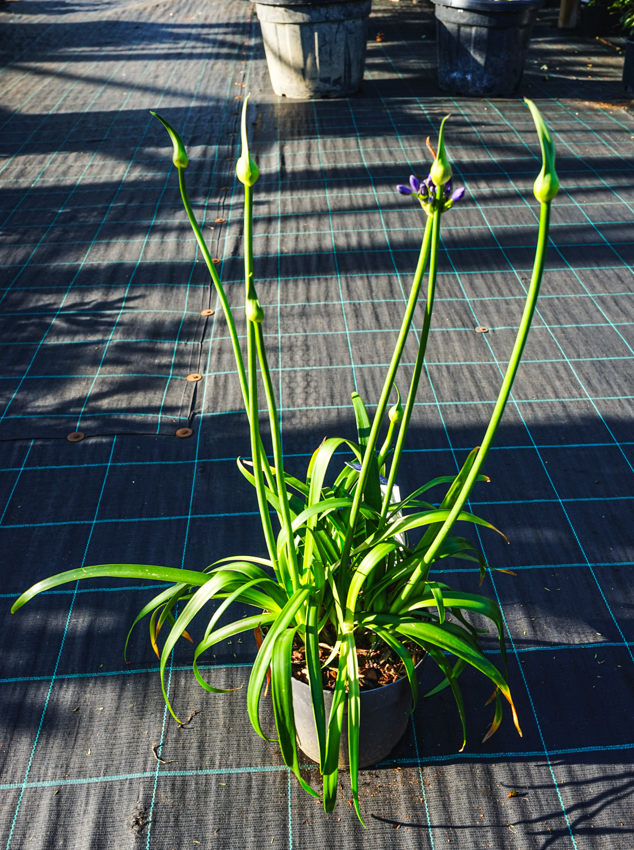
565,25 Kč

565,25 Kč
Goods are shipped all over Europe. For Russia and U.K. and for further details please read about SHIPPING OPTIONS HERE.
Are you interested in a serious discount for orders NOV-FEB? Check your options here.
THE PRICES INCLUDE VAT of 15%. For quick conversion you can use 1 CZK = approx. 0.04 EUR
- STANDARD QUALITY - Plants of this group are 1st class quality with number of branches and overall density adequate to their size and age, considering they were container grown.
- DE LUXE QUALITY - This label guarantees a luxurious quality of manually selected plants that, compared to their height and age, are exceptionally dense and beautiful.
- EXTRA - These plants are usually mature and bigger specimens with exceptional overall appearance.
- STANDARD (as described in the plant form) means a tree with a trunk of 190-210 cm and a crown at the top, unless specified differently. The commercial size for trees is their girth measured in the height of 1m from ground.
- HOBBY - These plants are of the same quality as our standard-quality plants but younger and therefore cheaper.
- SHRUB - a woody plant with branches growing bushy from the ground level.
- HALF-STANDARD or MINI-STANDARD - a small tree with shorter trunk, its size is usually specified.
- FEATHERED - These are trees with branches growing already from the base of the trunk and up along the stem.
- GRASSES and PERENNIALS - Sizes given usually read the diameter of the pot or the clump, as specified.






























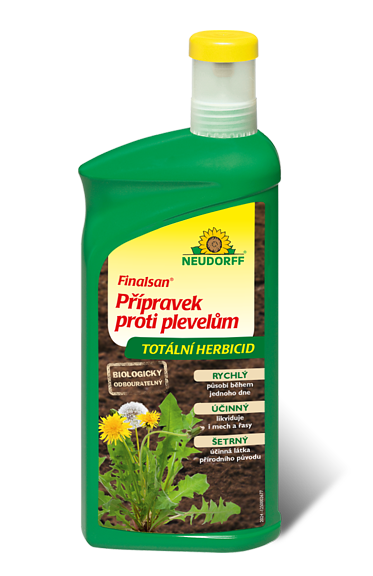


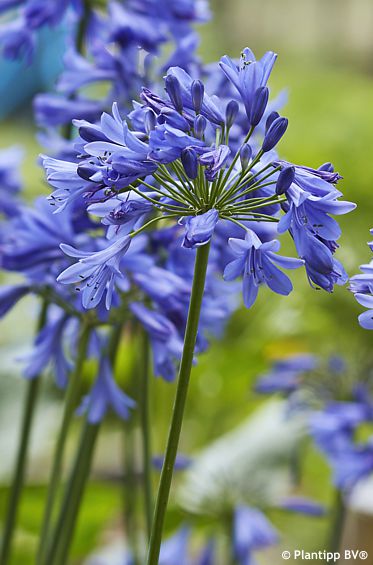
.jpg)
